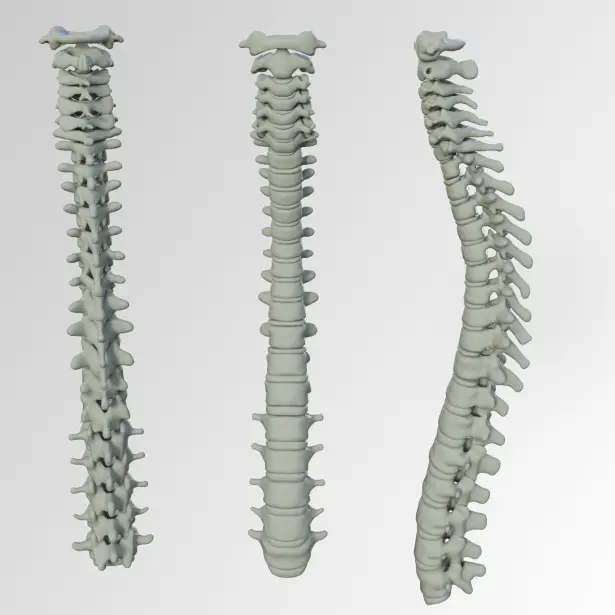
You’ve probably heard the term “core strengthening exercises” and heard how effective they can be, but if you’re not familiar with core workouts and what they can do in terms of results, then your workouts may be suffering. So, what are core exercises? These exercises train the muscles in the abs, hips, lower back, and pelvis. They can lead to improved stability and balance, while improving strength and increasing back health. In fact, there are many physical activities and sports that heavily depend on core strength.
Inversion table exercises work to strengthen the core like you wouldn’t believe. These are challenging exercises that can provide results in just a matter of a few weeks. Many of these exercises are designed for advanced workouts, but there are some modifications you can make, if you’re a beginner, that can take your workouts and your physical fitness, to the next level.
Working out on an Inversion Table
Strengthening the abs is very important for basic health. Strong abdominal muscles can prevent back injuries and helps to stabilize the spine. Any type of exercise that will involve the use of back muscles and the abs in a type of coordinated manner is considered a core exercise.
[box]Inversion tables for workouts are often used as a way to increase the intensity of exercises, helping to strengthen and challenge the core muscles. The key here is to get the best inversion table for your specific needs. While most models of inversion tables look identical, there are some differences you should pay attention to that can help you to determine which model is suitable for you.[/box]On an inversion table, you’ll be suspended by your ankles, so a good ankle locking system will be crucial. Failure to pay attention to this feature can result in a pretty painful workout. If you plan on using your inversion table a few times a week, a sturdier frame is also essential.
Some models can lock in full inversion. This means that the table’s backrest can pass one hundred and eighty degrees of rotation. These tables will come to a rest on the front leg crossbar and come equipped with a light backrest and adjustable pivot arms.
In any case, before you buy an inversion table specifically for core workouts, make sure you read inversion table reviews to find models that are tough enough to withstand challenging core workouts.
Inversion Table Workouts for a Solid Core

Inversion table sit-ups: Many fitness enthusiasts believe that inverted sit-ups are the most effective ab exercises. Gravity will help straighten the spine, so too much weight isn’t placed on the back. To do, place your hands on your chest or behind your head, then do a sit-up. Beginners will probably need to place their hands under their knees in order to help pull themselves into a full sitting position. There are some personal trainers out there that believe that a single inverted sit-up equals one regular sit-up. Beginners should shoot for three sets of six. People in shape should do four sets of twelve.
Squats: On an inversion table, you can also work out your legs, which is one of the best things about this type of core workout. For stability, place each hand on the back legs of the frame. With your knees bent, lift your body skyward. This move is similar to a basic standing squat. The only exception is that you’ll be utilizing the leg muscles to pull your body up, as opposed to using your body weight for resistance.
Crunches: For some, crunches are a little easier than full sit-ups. To do, place your hands behind your head or on your chest, lifting your torso halfway to your knees. Beginners should do three sets of eight, people who are already in shape should shoot for four sets of twenty to twenty-five.
Tables equipped with an angle locking feature can allow you to do basic inversion table exercises from different levels of incline. Tables with this feature are typically more expensive, but they’re definitely worth it considering they can allow you to intensify your workouts gradually. Additionally, this type of table can also allow you to do back hyperextensions which focus on your lower back.
Hyperextensions: For this type of exercise, you’ll be lying facedown on the table. Begin by locking your ankles. The backrest should be locked at the desired angle. Next, raise the upper body and bend at the waist. Hold this position for a few seconds, then return to the starting position, slowly.
Improving Flexibility
These tables are not only used for core workouts, they’re also often used to stretch the muscles of the back and abdominal area in order to relieve pain. You can stretch your muscles by lying on your back and fully inverting the table. Next, raise both arms over your head. This move stretches out the spine, relieving pressure that’s normally placed on the spinal discs.
Other Benefits
Inversion therapy helps to stretch the body while working muscles that would otherwise be ignored, such as deep core muscles. This type of treatment gets lymphatic fluids flowing through the body. Increased lymphatic flow works to remove waste from tissues in the body.
Moving back and forth on the table can also improve lymphatic circulation. People with bulging discs, scoliosis, sciatica, and other types of spinal conditions can benefit from consistent use.
Final Thoughts
Regular workouts on an inversion table will not only strengthen your core and ligaments, it will also improve your flexibility and posture. Some studies have shown that inversion table use can elongate the spine.
Working out on an inversion table will simply make all the moves more challenging because it adds more bodyweight to each move. You can get a more effective workout done in less time, and all without having to use heavy weights.
You’ll also be able to seamlessly move from one exercise to the next without having to change equipment or reset a machine, so you can enjoy a fast, efficient, and challenging workout.



